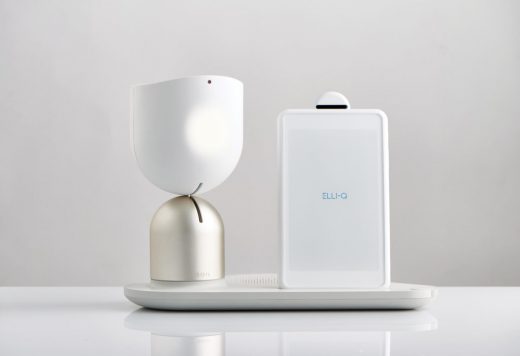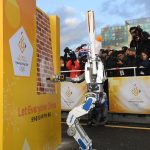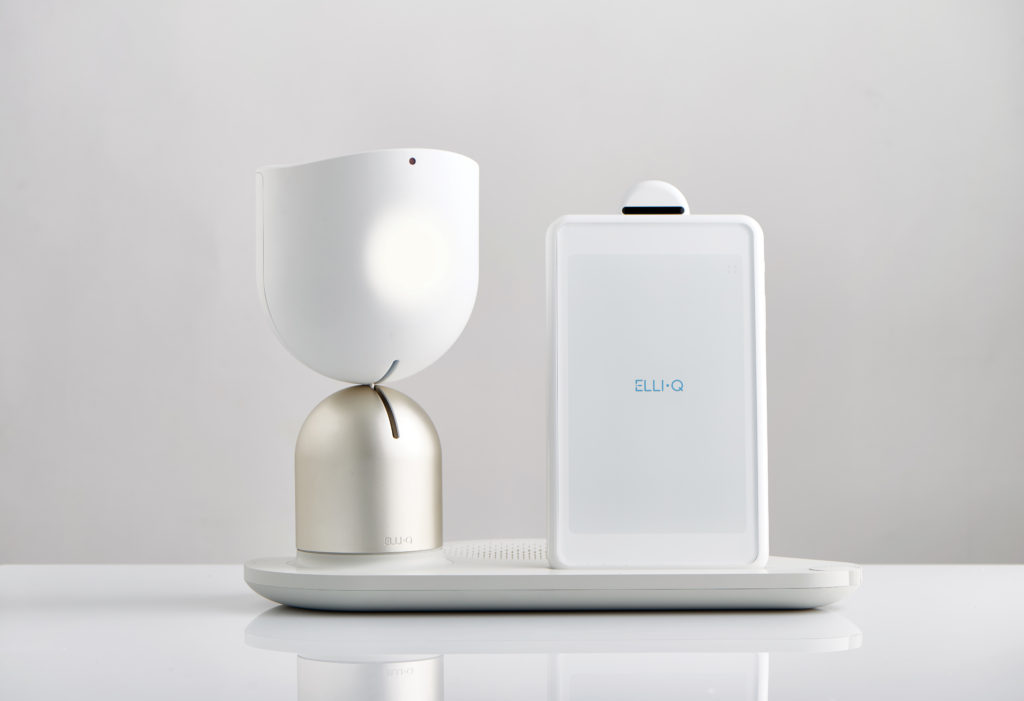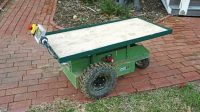Can ElliQ the robot combat social isolation in the elderly?
Can ElliQ the robot combat social isolation in the elderly?

When you think of robots designed to help people, you might think of the role of robotics in caring and customer service roles or companion orientated service robots like Pepper, Nao or even Hasbro’s companion pets. Then more recently there’s the emergence of robots as sexual or romantic partners. One start-up from Israel, Intuition Robotics is throwing an interesting offering into the ring, a new AI companion called ElliQ, aimed at keeping older adults active and engaged, and reducing the epidemic of loneliness among older people. I spoke with Dor Skuler, CEO and co-founder to find out more.
Skuler explained the rationale behind the robot:
“We live longer but also healthier lives. 90 percent of older adults want to live in their own home and the period of time we’re still cognitive, still independent and we don’t have to live in assisted care is growing. Conversely, younger people live further, and further away from their parents with hectic lifestyles that rely heavily on technology. About 30 to 60 percent of older adults identify themselves say that they are lonely which usually means that the real number is even higher.”
In terms of function, ElliQ is perhaps closer to Alexa than Pepper as Intuition Robotics is leveraging Cognitive Computing, Human Robotics Interaction, and Cloud Robotics in developing the robot’s ability to proactively recommend digital and physical activities to keep owners active and engaged with family, friends, and life.
The robot creates a conduit for older adults to connect with their family. As Skulker notes:
“What we can do with robots is really simplify the means for older adults to connect with their family. If you look at a typical family, we’re all on Facebook Messenger. We share some of the information and pictures and content but aging parents are not part of that discussion. Teenagers don’t want to call grandparents. But what they love to do is share a selfie, to find the link to a TED talk. They maybe send an emoji or text message and communicate the way they’re used to communicate but just on messenger. So the first thing that we created is in essence, a virtual chat bot for a messenger that allows the family to very easily connect with Grandma.
But it’s extremely intuitive. They don’t have to work the text, they don’t have to unlock their phone. They don’t need to try and look at small letters, they don’t need to click anything with their fingers. We just tell them ‘hey here’s a new picture from your granddaughter do you want to see?’ If she says yes we can show it to her and if she wants to comment then we record a message and it’s sent. So all of a sudden she’s part of the conversation. She gets the opportunity to get the content instead of having that once a week awkward discussion, she’s just part of the family.”
See also: Are robots replacing humans in health care?
It’s a bit like putting older relatives back in the family home where they are content to sit and observe and engage with the family members as they go about their day. ElliQ also takes this a step further with a proactiveness that differentiates the robot from Alexa and Siri that wait for the user to prompt them:
“Older adults by and large become reactive and not proactive. they tend to stick to a routine. They tend not to discover and add new things and new capabilities to their day. If you suggest things to them that are relevant to them there’s a very high probability that they’ll say yes. (Which by the way means you have to be extremely responsible and only suggest appropriate things and never take advantage). So basically ElliQ has extremely smart sensors and the ability to understand what’s going on at home and suggest activities. For example, ‘ Hey, it’s a beautiful day why don’t you go for a walk?’. It might be a schedule reminder to take your meds, a reminder to keep an appointment and it might be in the digital world: ‘Hey you want to listen to some Frank Sinatra? Or here’s a great TED talk you might want to listen to?’”
A unique aesthetic
ElliQ’s innovative design was created in collaboration with Yves Béhar, founder and principal designer of the award-winning industrial design firm fuseproject. It is comprised of two separate elements: ElliQ, the social director, exhibits human characteristics through gestures animated by movement, speech, sounds and light. A LED lighting display, along with a wide range of motions are utilized to convey subtle emotional expressions and give the device a friendly and warm personification. The second element consists of a separate screen that functions in a cradle display or in the user’s hand to view content in the location of their choice.
It’s not every day that you speak to a CEO of a start-up whose first hire was a gerontologist. Other involved with the project include former VP of Advanced Technologies at Apple, Prof. Don Norman, along with Intel SVP Amir Faintuch, and leading academic experts in the fields of Cognitive Computing, HRI, Machine Intelligence, and Robotics.
Skuler explained that some of their initial assumptions of a robot for the aged were incorrect:
“We thought that we each create an environment in which the older adult needs to take care of ElliQ and we found out that that’s not really the case. The best thing you can do is help people feel like they’re not completely alone at home. We were worried that older adults wouldn’t want to talk to a machine. Especially when I sat in a room full of older adults and showed them how I use Siri. and I got very strange looks. But we found they are absolutely willing to talk to a machine and over time they treat them more and more as entities rather than devices.”
ElliQ is currently being showcased at the Design Museum in London and in February Intuition Robotics will be rolling out a trial phase in the homes of older adults in the San Francisco Bay Area.
The post Can ElliQ the robot combat social isolation in the elderly? appeared first on ReadWrite.
(44)














